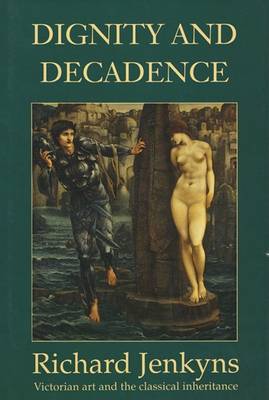The starting point for Richard Jenkyns's latest work is his contention that the Victorian age, which we think of as the great age of Gothic, was so shot through with the influence of the classical past that we should instead think of Victorian art and architecture as the continuing flow forward of two stylistic streams--the Gothic and the classical, side by side. In advancing his argument Jenkyns turns our accepted notions of the Victorians upside down, presenting Ruskin as an admirer of Greek statuary, the Houses of Parliament as a classical rather than a Gothic composition, and Thomas Woolner, the only sculptor among the original Pre-Raphaelite brotherhood, as a neo-Hellenic carver and poet. Jenkyns moves effortlessly between the general and the particular and is refreshingly unafraid to make judgments. Here are some of the best descriptions of Victorian painting, sculpture, and architecture to have appeared in recent years. From the very gradual changes throughout the paintings of Leighton and Alma-Tadema, to the operettas of Gilbert and Sullivan, the 'aesthetic scripture' of Pater, and even the advertisements for Beecham's pills, Jenkyns shows how what had been merely eclectic became a distinctive fin-de-siecle style and eventually began to point the way for Modernism. These are grand themes, presented by a masterly guide. Above all Jenkyns is entertaining: Dignity and Decadence is one of the most illuminating and enjoyable books about the Victorians yet to appear.
- ISBN10 0674206258
- ISBN13 9780674206250
- Publish Date 1 May 1992 (first published 21 November 1991)
- Publish Status Out of Print
- Out of Print 1 April 2014
- Publish Country US
- Imprint Harvard University Press
- Format Hardcover
- Pages 352
- Language English
